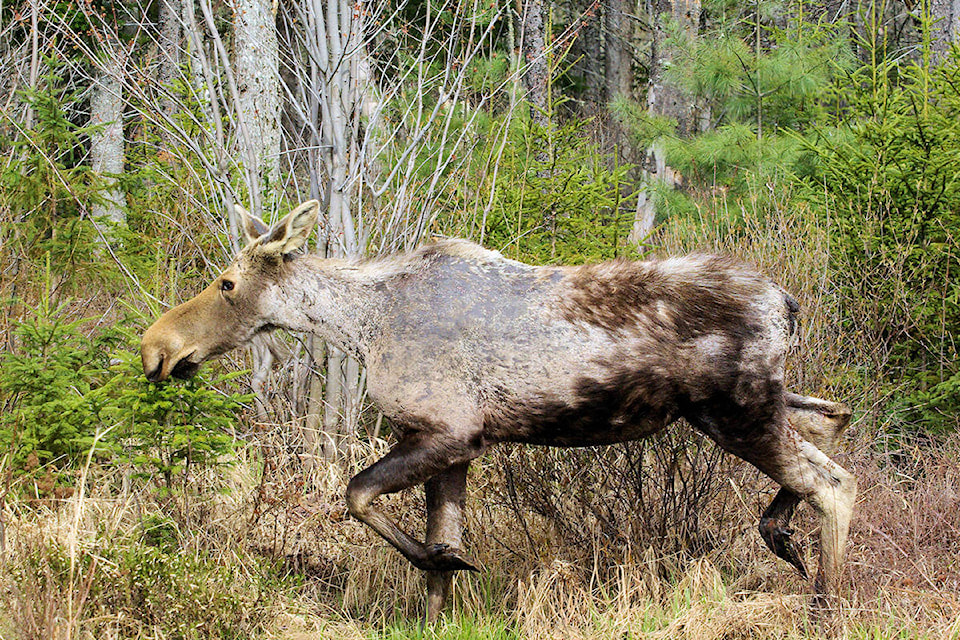The Ministry of Forests, Lands, Natural Resource Operations and Rural Development’s BC Wildlife Health Program is asking for input to its moose winter tick survey.
The program seeks to monitor the number of animals with hair loss; assess the amount of hair loss on each animal; and estimate the overall prevalence and distribution of winter ticks.
It relies on observations from wildlife professionals, wildlife enthusiasts and the general public. There are between 120,000 and 200,000 moose in B.C.
Tick infestations can, at times, result in severe behavioural and physiological changes and directly affect the survival rates of moose, especially in younger animals. Winter ticks can have a significant impact on moose populations when climate and habitat conditions promote high tick numbers. Adult female ticks may grow from 6.5 millimetres to nearly 15 mm in length. Winter ticks pose no health risk to humans.
Winter tick infestations are generally observed on moose during January through April. This species of tick goes through three life stages over the winter on one host. There can be as many as tens of thousands on an individual moose. As the ticks mature, they feed on the blood of the animal and can cause anaemia. In late winter, tick irritation can cause moose to excessively scratch and groom themselves, resulting in hair loss and less time spent foraging, which can lead to weight loss. The extent of hair loss on a moose can be observed easily from a distance and is a rough indicator of how many ticks are present.
Anyone interested in contributing to this surveillance program can fill out a survey online at www.gov.bc.ca/wildlifehealth/mooseticksurvey. Alternatively, the electronic survey can be saved and completed on a computer, tablet or mobile device and returned via email to: FLNRMooseTickSurvey@gov.bc.ca.
Participants are asked to observe and report the amount of hair loss, if any, occurring on moose and check the survey box that most accurately describes the animal’s appearance. There are five categories, ranging from “no hair loss” to “more than 80% loss of winter hair.”
The findings of the surveillance program will contribute to the Provincial Moose Research Program, which was initiated in 2013 to investigate factors influencing moose populations in British Columbia.
Read the latest winter tick study report:
Review the provincial moose management plan:
READ MORE: Video: Taking to the skies to protect moose in the Cariboo Chilcotin
